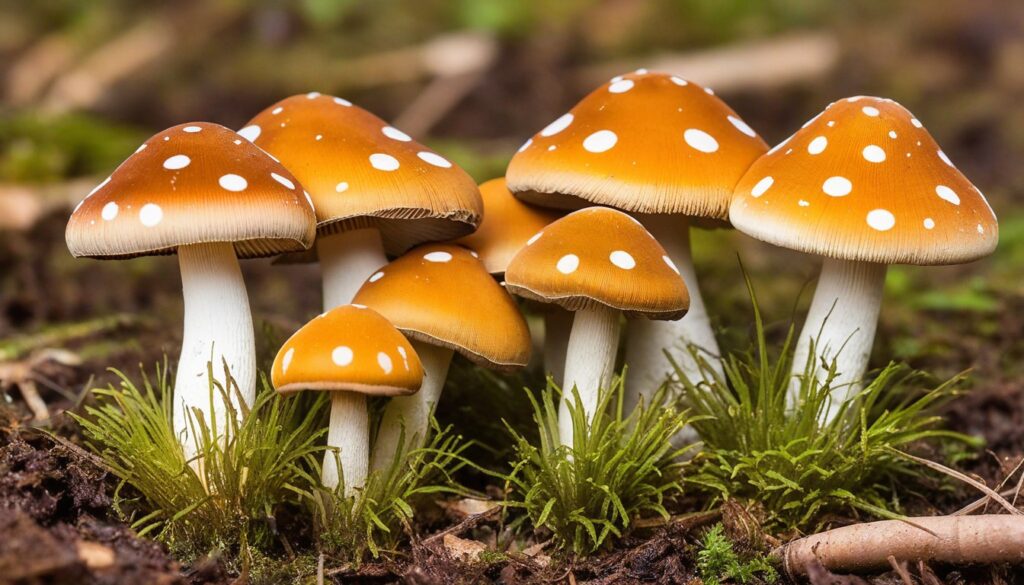Did you know that psychedelic mushrooms can actually be grown in cow poop? It may sound strange, but it’s true. This unique phenomenon is not just a fun fact; it has actually been utilized for thousands of years by various cultures around the world for both medicinal and spiritual purposes.
In this section, we will explore the fascinating connection between cow manure and the growth of psychedelic mushrooms. Get ready to dive into the facts and uncover the truth behind this unique phenomenon.
Key Takeaways:
- Psychedelic mushrooms can be grown in cow poop.
- Cow manure serves as a fertile medium for the growth of these mind-altering fungi.
- This unique phenomenon has been utilized for thousands of years for both medicinal and spiritual purposes.
- Environmental factors play a role in the growth and colonization of mushrooms in cow poop.
- Psilocybin, the psychoactive compound found in psychedelic mushrooms, is closely linked to cow manure.
What Are Psychedelic Mushrooms?
Psychedelic mushrooms, also known as magic mushrooms or shrooms, are a type of fungi that contain psychoactive compounds such as psilocybin and psilocin. These compounds interact with the brain to induce altered states of consciousness, which can result in powerful and often profound experiences.
Psychedelic mushrooms have been used for centuries by different cultures for spiritual and ceremonial purposes. Their effects are highly subjective and can vary based on several factors such as dosage, individual brain chemistry, set and setting, and the specific species of mushrooms consumed.
In addition to their potential as a tool for self-discovery and personal growth, psychedelic mushrooms are also currently being studied for their potential therapeutic benefits in treating conditions such as depression, anxiety, and addiction.
The Compounds Responsible for their Effects
The primary psychoactive compound found in psychedelic mushrooms is psilocybin, which is converted to psilocin in the body. Psilocin is chemically similar to serotonin, a neurotransmitter that regulates mood, cognition, and perception. This molecular similarity allows psilocin to bind to serotonin receptors in the brain, leading to altered states of consciousness.
In addition to psilocybin and psilocin, psychedelic mushrooms can also contain other psychoactive compounds, such as baeocystin and norbaeocystin. The specific combination and concentration of these compounds can vary based on the species of mushroom, among other factors.
The Life Cycle of Psychedelic Mushrooms
Psilocybin mushrooms, also known as psychedelic mushrooms, undergo a complex life cycle that begins with the germination of spores. Once the spores land on a suitable substrate, such as cow manure, they develop into thread-like structures called hyphae. Over time, the hyphae grow and organize themselves into a network of interconnected cells known as mycelium.
The mycelium is the vegetative part of the fungus that obtains nutrients and water from its surrounding environment. As the mycelium matures, it begins to form fruiting bodies – the part of the fungus that we commonly refer to as mushrooms. The formation of fruiting bodies is a sign that the mushroom is in its final stage of development and is ready for reproduction.
Environmental factors play a vital role in determining the timing and success of each stage of the mushroom’s life cycle. Factors such as temperature, humidity, and nutrient availability can influence the growth rate, yield, and potency of the mushrooms. Understanding the life cycle of psychedelic mushrooms is critical for cultivating them and reaping their full benefits.
Key Stages of Growth
The life cycle of psilocybin mushrooms consists of five main stages:
- Spore stage: This is where the mushroom’s life cycle begins, with the germination of spores.
- Hyphae stage: The spores mature into thread-like structures called hyphae, which network to form mycelium.
- Mycelium stage: As the mycelium grows and expands, it extracts nutrients from its surroundings, such as cow manure, to support the formation of fruiting bodies.
- Primordia stage: The primordia is the small, immature stage of the fruiting body, which begins to form on the surface of the mycelium.
- Fruiting stage: This is the final stage of the mushroom’s life cycle, where the primordia develops into a mature fruiting body that bears spores and is ready for harvest.
Understanding the life cycle of psychedelic mushrooms is essential for creating optimal growing conditions and maximizing yield. Whether you are growing mushrooms for personal use or scientific research, knowing the key stages of growth is vital for success.
The Role of Nutrients in Mushroom Growth
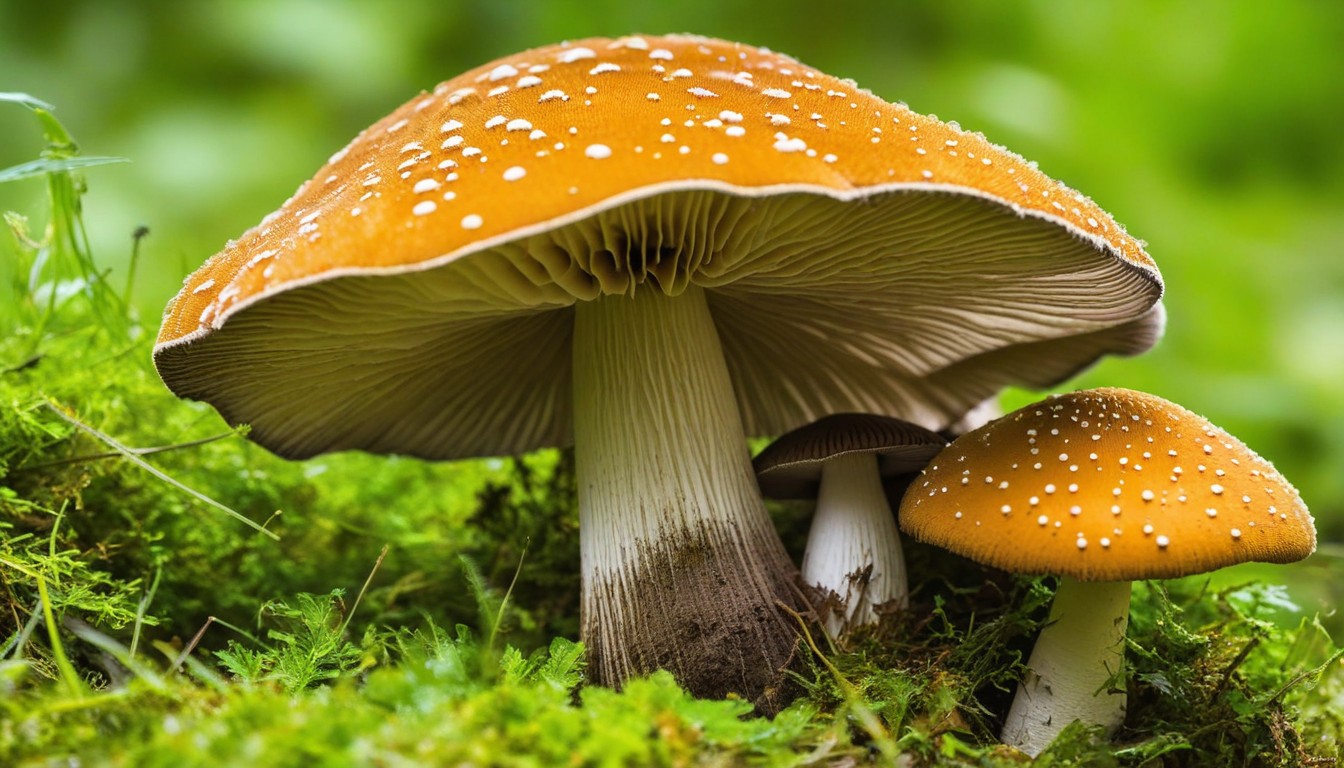
Nutrients play a crucial role in the growth and development of mushrooms, including the psychedelic varieties found in cow manure. These fungi require a variety of nutrients to form their fruiting bodies and produce their psychoactive compounds.
Specific Nutrients Required by Psychedelic Mushrooms
The specific nutrients required by psychedelic mushrooms vary depending on the species. However, some commonly required elements include:
- Carbon: This element is required for energy and makes up the structural backbone of mushroom cells.
- Nitrogen: Mushrooms require nitrogen to build proteins and other essential molecules.
- Phosphorus: Phosphorus is necessary for DNA and RNA synthesis and plays a crucial role in energy transfer in mushroom cells.
Obtaining Nutrients from the Environment
Psychedelic mushrooms obtain nutrients from their surrounding environment, including soil and decaying organic matter like cow dung. Through a process called “mineralization,” mushrooms extract nutrients from organic material to fuel their growth and development.
Not all organic matter is created equal, and the nutrient content of materials like cow dung can vary widely depending on factors like diet and digestive system of the animal. In general, however, cow dung is rich in organic matter and minerals like nitrogen and phosphorus that mushrooms need to thrive.
The Importance of Nutrients in Mushroom Cultivation
To successfully cultivate psychedelic mushrooms, it’s essential to provide them with a nutrient-rich substrate like cow dung. Balancing the nutrient content and pH of the substrate is key to successful mushroom cultivation and can involve the use of additives like gypsum or lime.
By understanding the specific nutrient requirements of psychedelic mushrooms and how they obtain these elements from their environment, it’s possible to cultivate high-quality, potent mushrooms for personal or scientific use.
Cow Dung: A Fertile Medium for Mushroom Growth
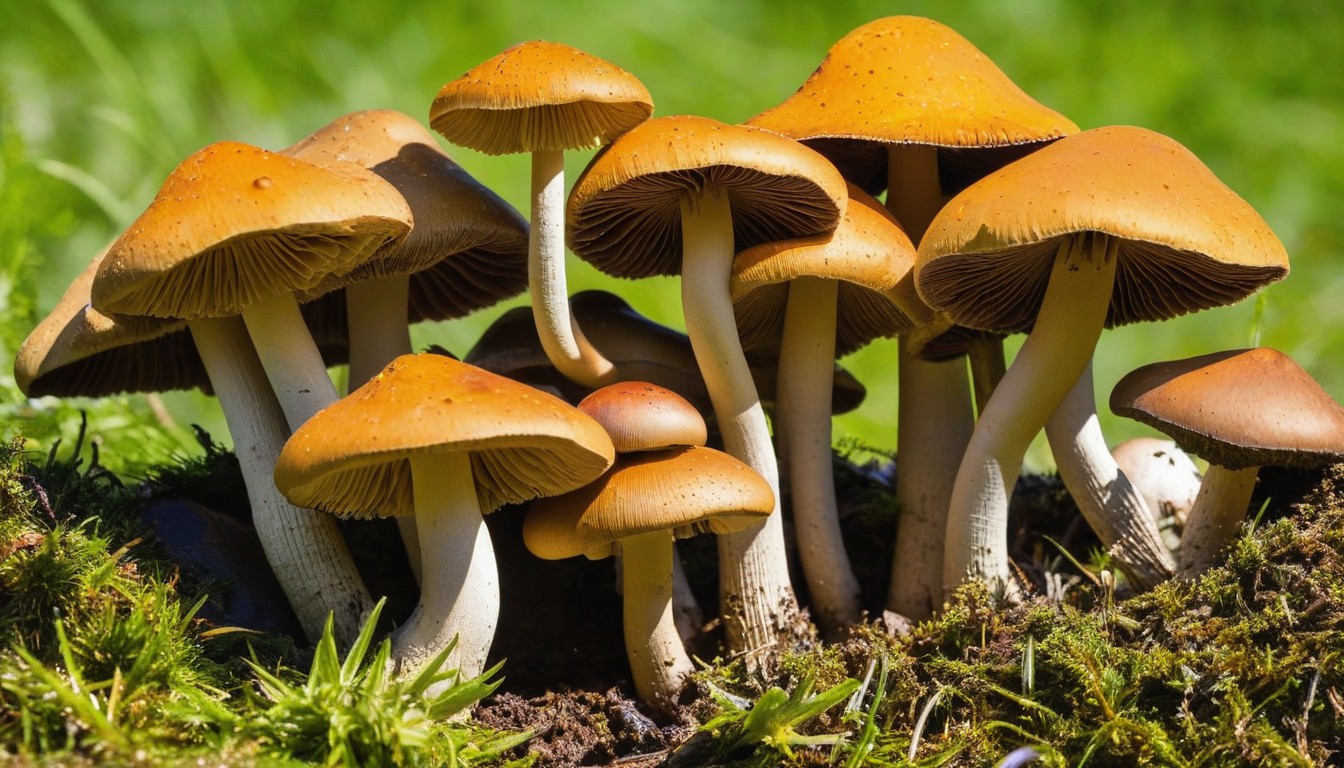
Cow dung is more than just a pile of animal waste – it’s also a fertile ground for the growth of psychedelic mushrooms. These mushrooms have evolved over time to utilize the nutrients and unique properties of cow manure to thrive and multiply.
One of the key reasons why cow dung is such an ideal medium for mushroom growth is its high nutrient content. Cow manure contains a variety of essential nutrients, including nitrogen, phosphorus, and potassium, which are crucial for the growth and development of mushrooms. These nutrients come from the plant matter that cows consume, which is broken down and metabolized in their digestive system before being excreted as waste.
In addition to its nutrient content, cow manure also provides a moist and humid environment, which is perfect for mushroom growth. The consistency of cow dung allows for adequate aeration, moisture retention, and water drainage, all of which are essential for healthy mushroom development.
Another unique property of cow dung is its pH level. The slightly acidic nature of cow dung (pH around 6.5) is optimal for the growth of certain types of mushrooms, including those with psilocybin, the psychoactive compound responsible for their mind-altering effects.
Overall, cow dung plays a vital role in the growth and development of psychedelic mushrooms, providing them with the nutrients, moisture, and unique environment they need to thrive. Without cow manure, these remarkable fungi might not exist in the abundance and diversity that we see today.
The Connection Between Psilocybin and Cow Manure
Psilocybin, the psychoactive compound found in psychedelic mushrooms, has a unique relationship with cow manure that has intrigued scientists for years. These mushrooms have evolved to utilize the nutrients and compounds found in cow dung to their advantage, leading to their proliferation in areas with high bovine populations.
Research has shown that psilocybin content in mushrooms is significantly higher in those grown on cow manure than those grown on other substrates. This is because cow dung contains high levels of nitrogen, phosphorus, and potassium, which are essential for the growth of mushrooms. In addition, the complex organic compounds found in cow manure stimulate the production of psilocybin in mushrooms, resulting in a higher concentration of the psychoactive substance.
This symbiotic relationship between psilocybin and cow manure has led to a unique farming practice known as “mushroom cultivation,” where farmers inoculate cow manure with mushroom spores to produce a steady supply of psychedelic fungi.
“Cow dung offers the perfect medium for the growth of psychedelic mushrooms. These fungi have evolved to take advantage of the unique properties of cow manure, resulting in a fascinating relationship between two seemingly unrelated entities.”
Overall, the connection between psilocybin and cow manure is a fascinating example of nature’s intricate and complex relationships. By understanding the science behind this unique phenomenon, we can marvel at the wonders of the natural world and gain a deeper appreciation for the interconnectedness of all things.
Factors Affecting Mushroom Colonization in Cow Poop
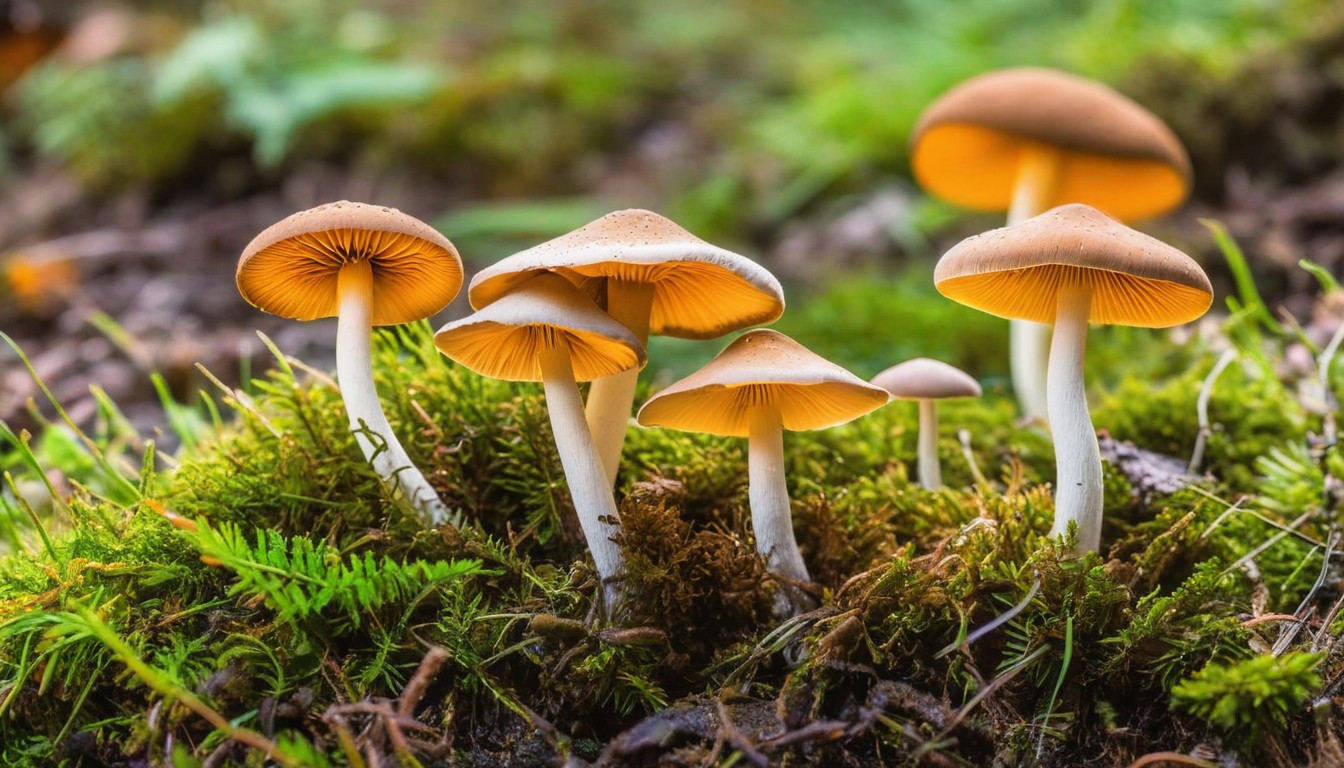
The growth and colonization of psychedelic mushrooms in cow manure are influenced by various factors. Temperature plays a significant role in determining the success of mushroom growth. The optimal temperature range for the growth of Psilocybe cubensis, one of the most common species found in cow dung, is between 70-78°F (21-26°C). Lower temperatures can slow down or halt the colonization process, while higher temperatures can lead to contamination by other microorganisms.
Humidity levels also affect mushroom growth. The ideal relative humidity for mushroom colonization is around 90%. Low humidity can lead to desiccation, while high humidity can promote bacterial and mold growth, leading to contamination.
The pH levels of cow manure can also affect mushroom growth. Psychedelic mushrooms prefer slightly acidic to neutral environments, with a pH range of 6-7. Cow manure that is too acidic or alkaline can hinder the growth of mushrooms.
The type of cow dung used as a substrate can also impact mushroom colonization. Fresh cow manure is an ideal medium since it contains the necessary nutrients for mushroom growth. However, aged or composted cow dung can also be used, although it may need to be supplemented with additional nutrients.
Factors Affecting Mushroom Colonization in Cow Poop
|
Factors |
Impact on Mushroom Colonization |
|---|---|
|
Temperature |
Optimal range: 70-78°F (21-26°C). Lower temperatures can slow down or halt the colonization process, while higher temperatures can lead to contamination |
|
Humidity |
Ideal relative humidity: 90%. Low humidity can lead to desiccation, while high humidity can promote bacterial and mold growth, leading to contamination |
|
pH Levels |
Ideal range: slightly acidic to neutral, pH 6-7. Cow manure that is too acidic or alkaline can hinder the growth of mushrooms |
|
Type of Cow Dung |
Fresh cow manure is an ideal medium since it contains the necessary nutrients for mushroom growth. Aged or composted cow dung can also be used, but may need additional nutrients. |
It is important to consider these factors to ensure successful colonization and harvest of psychedelic mushrooms from cow manure. Careful attention to the environmental conditions and substrate preparation can lead to fruitful yields of these captivating fungi.
Harvesting Psychedelic Mushrooms From Cow Poop
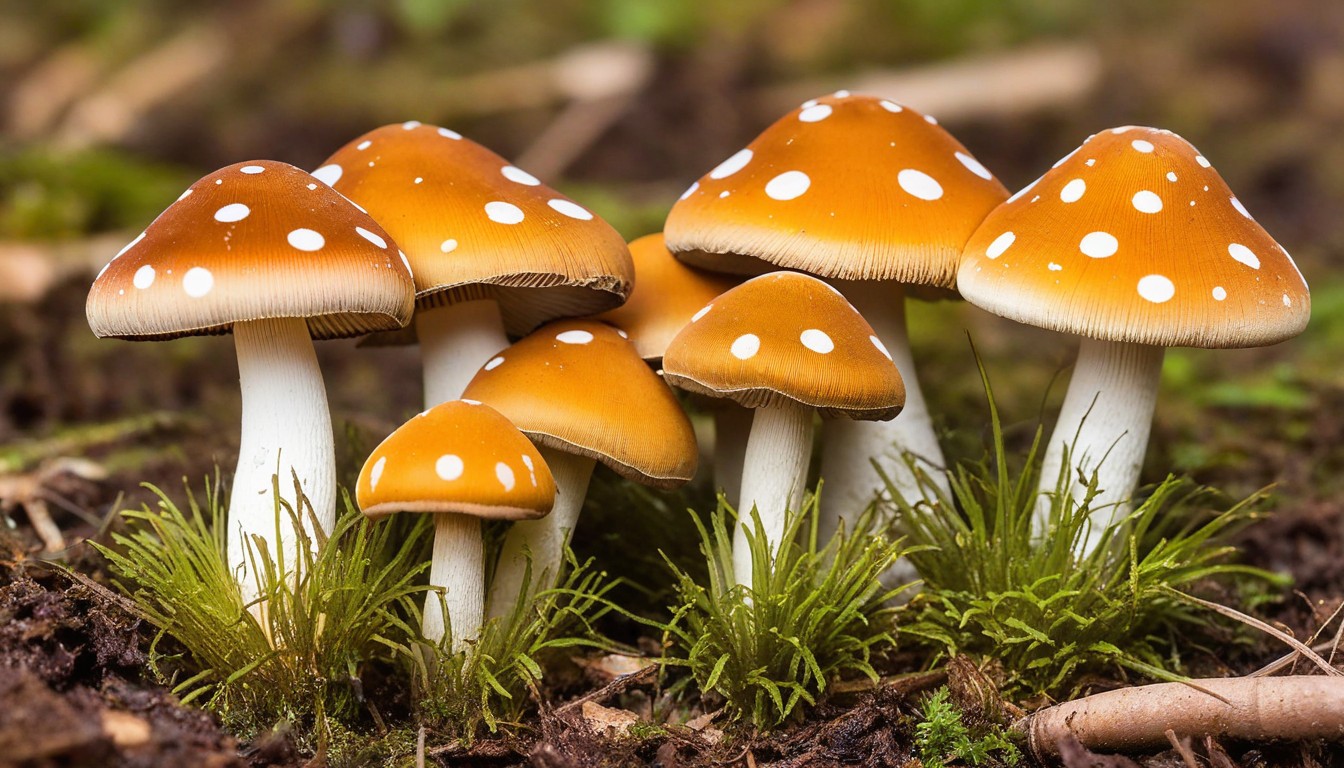
Harvesting psychedelic mushrooms from cow poop is a delicate process that requires careful consideration and technique. First, it is important to identify the appropriate time to harvest. This typically occurs when the mushroom caps are fully grown but still retain their dome shape, and just before the veil underneath the cap starts to break, indicating spore release.
Once you have identified a suitable mushroom, use a sharp blade or scissors to cut it as close to the cow dung as possible. Avoid pulling or twisting the mushroom, as this can damage the fragile mycelium network that supports its growth.
It is essential to handle psychedelic mushrooms with care, as they can be easily damaged or contaminated. Wear gloves and avoid touching them directly with your fingers. Place the harvested mushrooms in a paper bag, ensuring proper ventilation, and avoid plastic bags, which can trap moisture and promote bacterial growth.
Clean and sterilize all equipment thoroughly before and after harvesting to prevent contamination. If necessary, consult a professional mycologist for additional guidance on proper harvesting techniques.
Psychedelic Mushroom Species Found in Cow Dung
Cow dung plays a crucial role in the growth of a variety of psychedelic mushrooms. Let’s take a closer look at some of the most commonly found species within this unique medium.
Psilocybe Cubensis
Perhaps the most popular and well-known species, Psilocybe cubensis is a potent psychedelic mushroom that is commonly found in cow dung across the world. Its cap ranges from 1-8 cm, and its stem can grow up to 20 cm tall.
Copelandia Cyanescens
Also known as the “blue meanie,” Copelandia cyanescens is a highly potent species of psychedelic mushroom that grows in tropical regions worldwide, particularly in Southeast Asia and Hawaii. It features small caps and long, thin stems.
Panaeolus Subbalteatus
Panaeolus subbalteatus is a common species of mushroom that can be found year-round in cow dung across the globe. It is known for its small size, typically around 2cm in diameter, making it one of the smallest species of psychedelic mushrooms.
Psilocybe Azurescens
Psilocybe azurescens is a species of psychedelic mushroom native to the Pacific Northwest region of North America. It has a dark brown cap and thick stem and is known for its high psilocybin content.
|
Mushroom Species |
Cap Size |
Stem Height |
Geographic Distribution |
|---|---|---|---|
|
Psilocybe Cubensis |
1-8 cm |
Up to 20 cm |
Worldwide |
|
Copelandia Cyanescens |
Small |
Long, thin stem |
Tropical regions worldwide, particularly in Southeast Asia and Hawaii |
|
Panaeolus Subbalteatus |
2cm in diameter |
Small |
Global, year-round |
|
Psilocybe Azurescens |
Dark brown cap |
Thick stem |
Native to the Pacific Northwest region of North America |
As you can see, cow dung is home to a wide variety of psychedelic mushroom species, each with their own unique characteristics and effects.
Conclusion
Psychedelic mushrooms have long been associated with counterculture and alternative lifestyles. However, the mystery surrounding their growth and the role of cow manure in their development adds a new layer of intrigue to these fascinating fungi.
From understanding the life cycle of these mushrooms to the importance of nutrients and environmental factors, we have explored the science behind their growth. We have also uncovered the unique relationship between psilocybin and cow dung, and how this unlikely alliance has allowed for the proliferation of psychedelic mushroom species.
As we continue to learn more about these mind-altering mushrooms, it is important to appreciate their natural beauty and wonder. Whether you are an avid mushroom hunter or simply fascinated by the natural world, the connection between cow poop and psychedelic mushrooms is a fascinating topic that is sure to spark your curiosity.
So next time you come across a patch of mushrooms growing in cow manure, take a moment to appreciate the symbiotic relationship that has allowed them to thrive in such an unexpected environment.
FAQ
What are psychedelic mushrooms?
Psychedelic mushrooms are a type of fungi that contain psychoactive compounds such as psilocybin, which produce hallucinogenic effects when ingested.
What is the life cycle of psychedelic mushrooms?
The life cycle of psychedelic mushrooms starts with spore germination, followed by mycelium formation and the development of a fruiting body containing spores for reproduction.
Why are nutrients important for mushroom growth?
Nutrients play a crucial role in the growth of mushrooms, providing essential elements for their development and enabling the formation of mycelium and fruiting bodies.
Why is cow dung a fertile medium for mushroom growth?
Cow dung exhibits unique properties that create an ideal environment for psychedelic mushroom growth. It provides necessary nutrients, moisture retention, and a protective barrier against competing organisms.
What is the connection between psilocybin and cow manure?
Psychedelic mushrooms have evolved to utilize cow manure as a nutrient-rich substrate, utilizing the resources found within cow dung to produce psilocybin and facilitate their growth.
What factors affect mushroom colonization in cow poop?
Factors such as temperature, humidity, pH levels, and the presence of competing organisms all influence the successful colonization and growth of psychedelic mushrooms in cow poop.
How do you harvest psychedelic mushrooms from cow poop?
Harvesting psychedelic mushrooms involves carefully identifying mature fruiting bodies, using proper hand hygiene and tools, and ensuring the mushrooms are not contaminated during the collection process.
What are the common species of psychedelic mushrooms found in cow dung?
Common species of psychedelic mushrooms found in cow dung include Psilocybe cubensis, Panaeolus cyanescens, and Psilocybe semilanceata. These species vary in potency and geographic distribution.

